UI UX Review: What is it and How to Do it

If your digital product has been live for some time, it’s worth conducting a UI UX review in 2024 to evaluate its usability and define improvement areas.
There are many ways to assess your product’s current state from the usability perspective. A UX review is a cost-effective and quick way to get a holistic overview of your product’s UX (user experience) and UI (user interface) from UX experts. Based on our experience at Limeup, companies choose the review of UX design to get expert feedback and implement it in their product redesign process.
However, the insights from a UI UX review are limited to the expertise of your UX team because it does not cover user testing and user interviews. Therefore, more methods to assess the usability of your product exist, such as UX audit and user experience research.
Depending on your available timeframe, budget, and goals, it is important to choose a method that will help you accomplish your objectives and your user goals. Failure to include UX in your product strategy might adversely affect users’ perception of your product and its business performance in the long term.
According to Zippia, 32% of customers will stop doing business with a brand they love after one bad experience, while 59% will walk away after several glaring issues.
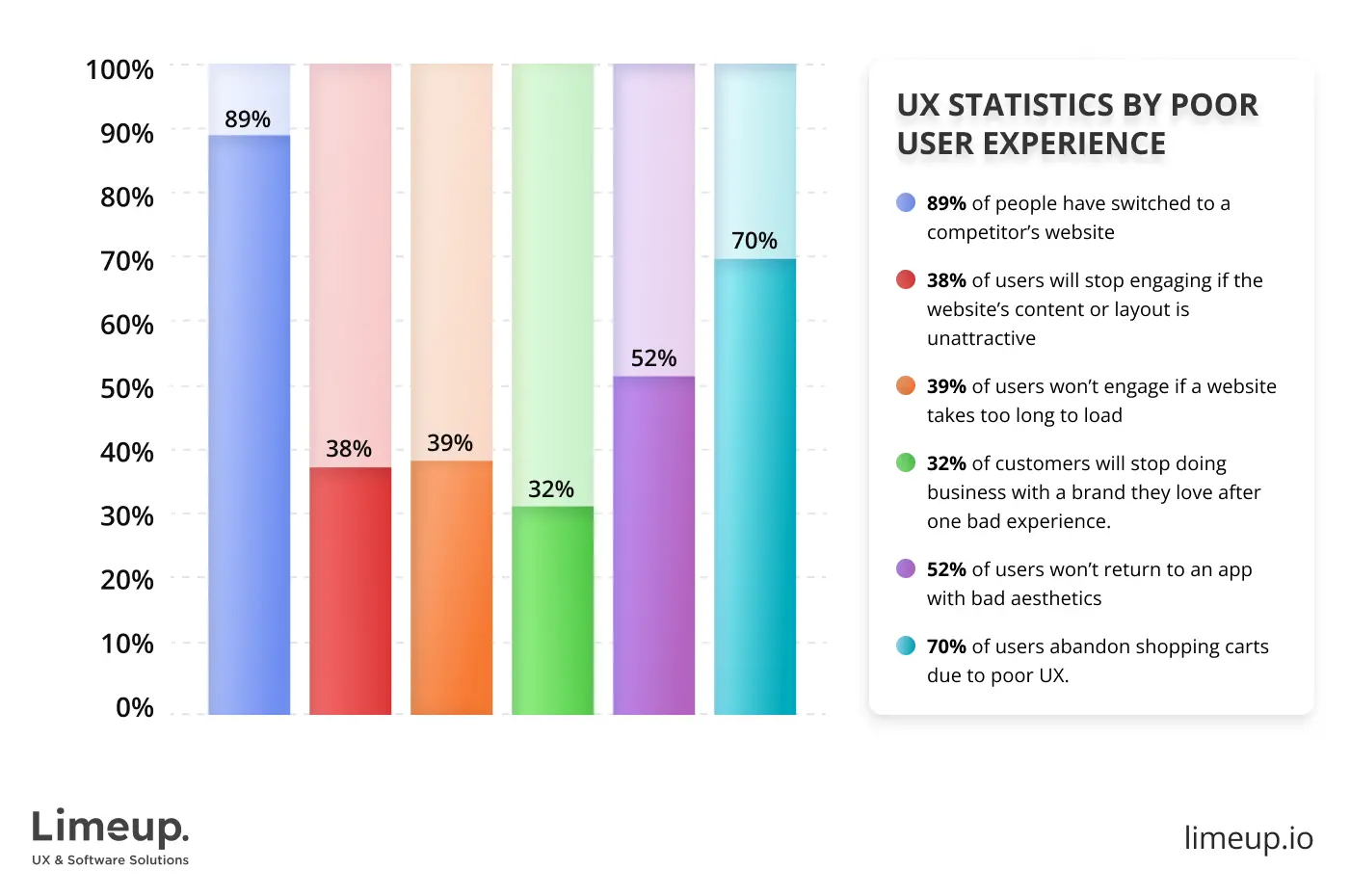
Example of UX statistics.
What does it mean for you?
If your product’s UX and UI, or even relevant parts, are obsolete and no longer help users navigate quickly to achieve their goals, they’ll likely abandon your product. There is no point in using a product with a poor user experience or user interface since too many alternatives are available.
If you believe your product might have UX flaws, a UI UX review is a great starting point to set a direction for improvement and provide a positive experience for users.
As a senior UX designer at Limeup, I wrote this in-depth guide to help you understand what UX review is when it’s worth conducting it for your business, how your business can benefit from UI UX review, and how to do it step-by-step.
Furthermore, I’ll explain what differentiates UI UX review from other UX-related services. So, you’ll know the difference between a UX review and a UX audit and won’t confuse these two when companies try to sell you their services. Moreover, I’ll also share my proven-to-work tips for conducting a UI review for your product.
What is UX review?
UX review is a quick evaluation of the usability and design interface of your product’s one or several user flows. It usually takes 1–2 weeks and is conducted by professional UX designers and researchers.
If you conduct a UX review in-house, it’s the responsibility of your UX team to assess the UX and UI of your product and recommend low-effort winning improvements. If you don’t have an in-house team of experts, we recommend you hire UX designers to give you feedback on the current state of your product.
There is one differentiating factor of UX review to remember — it does not cover user testing and user interviews with the core audience and current clients. It’s exclusively conducted by UX experts, and it represents their point of view on the flaws and opportunities of your product.
Therefore, UX review is relatively cheaper than UX audit and other UX services. You should not expect a complete UX strategy to rethink the usability of your product and a deep understanding of user research as a result of conducting a review. Instead, it’s a great starting point before a major product revamp.
If you are unsure whether it’s worth investing in a UX review, the following paragraph will explain why it’s worth conducting a user experience review and what you can achieve by doing it.

UX review formula.
Why do a UX review?
As a UX design agency, we often create complex UX solutions for startups and established companies worldwide. As a product owner, you want to fully understand the importance of implementing user experience research insights into their design work for the higher business impact of UX design.
Depending on the complexity of your project, I outlined when it will be useful to perform a UX review for your business. Contact us if you need help with a product review. At Limeup, we have 40+ UX experts ready to help you with your UX challenges and help in attracting new clients.
1. Get a fresh perspective
Can you recall a moment when you’ve worked on a particular project long enough not to be able to provide critical feedback?
No worries. It happens to everyone because continuously working on one product area makes us unable to see the broad picture and notice new challenges, such as user behavior changes. This particular state even has a term, “tunnel vision,” which Collins Dictionary explains as “a state when someone is concentrating completely on achieving a particular aim, and do not notice or consider all the different aspects of what others are doing.”
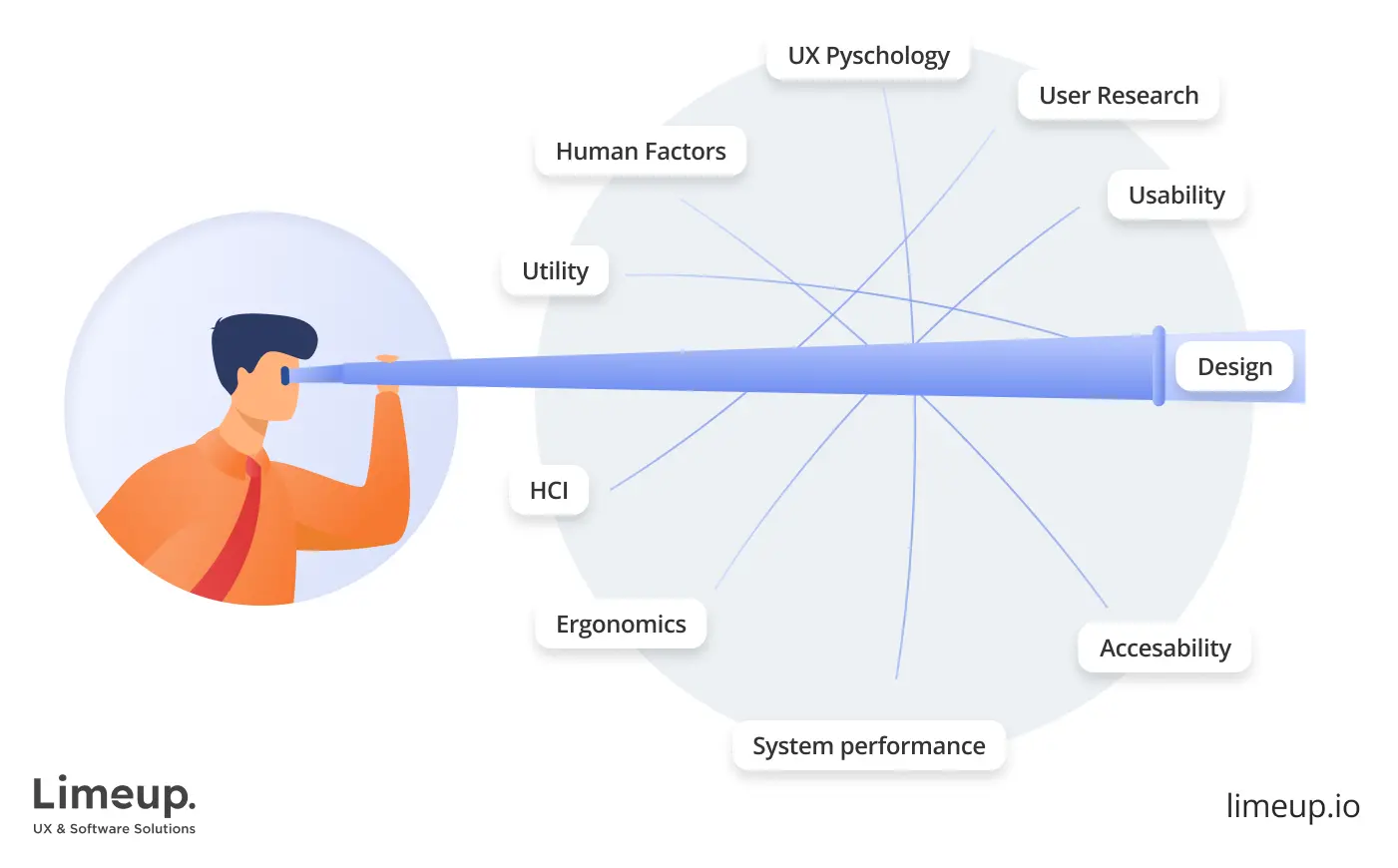
Example of the “tunnel vision”.
UX review can help your product team cope with a “tunnel vision” and discover new UX challenges by getting a fresh perspective from the outside when it comes to user journey. External UX experts who don’t know your product, user research, your business strategy, and current challenges can assess your product from user and UX perspectives, which will help you discover valuable insights you have not seen before and engage new users.
2. Get expert feedback
At Limeup, we involve an experienced UX practitioner and more tech specialists who worked with companies on different UX maturity levels. In other words, some had a better understanding of UX principles than others. Sharing our experience and consulting about the importance of UX and the design process helped startups and companies at the early stages of growth to set the right direction and implement proven-to-work UX design strategies.
That’s why we always recommend partnering with UX experts in your field to conduct a UX review since they can provide you with actionable insights you simply can’t get from your product team.
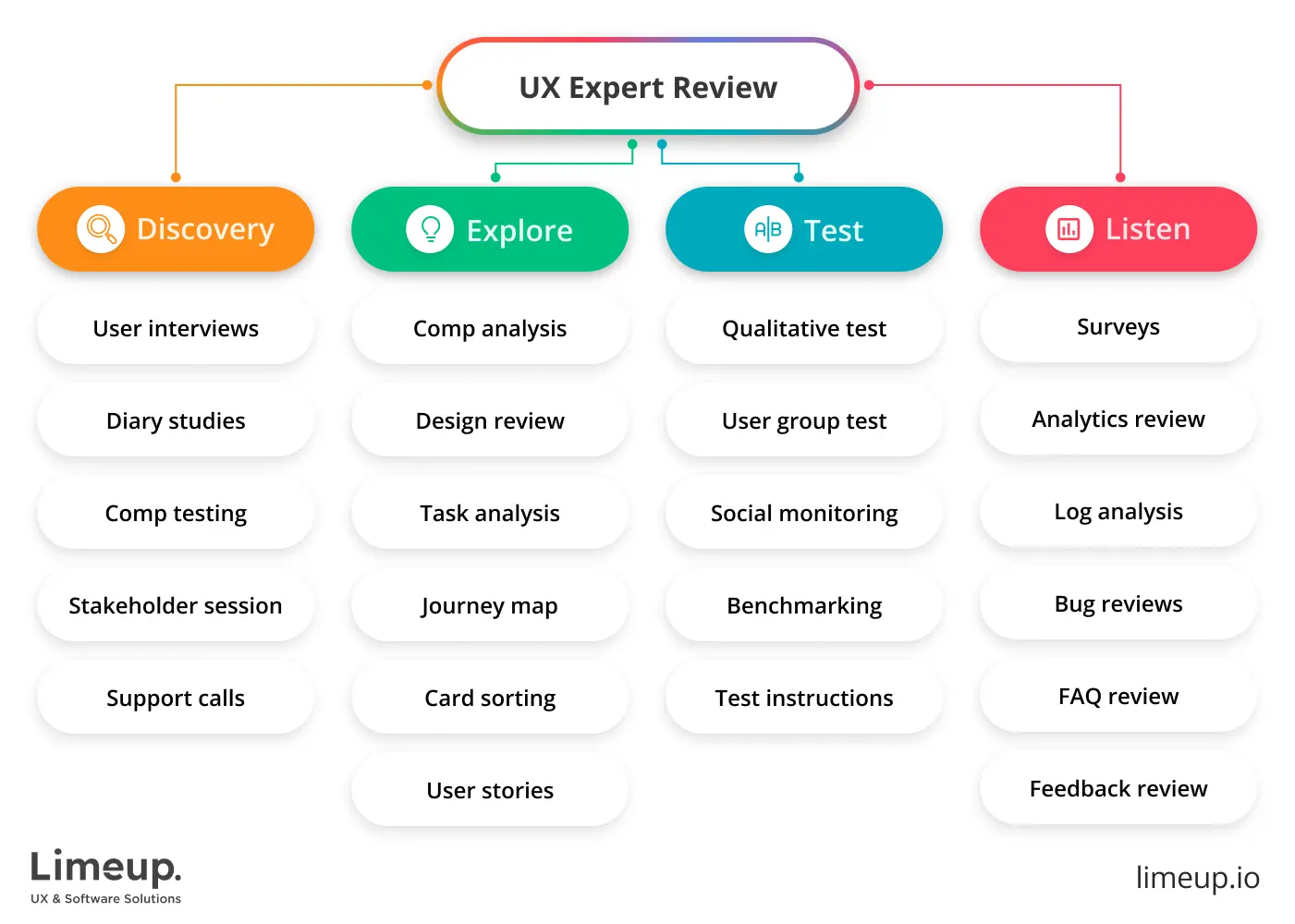
UX Expert Review.
3. Improve the usability of your product at a low budget
I must admit that websites and landing pages interface design are costly because getting valuable research insights takes time and resources. Many companies can’t afford to conduct proper user experience research to implement a validated interface design solution. They often look for a cheaper alternative to get insights about their product UX and what can be implemented to improve its usability.
A UX review is your go-to solution to get quick and insightful usability testing of your product done by UX experts. Years of field and industry experience let UX designers and researchers accurately discover problematic areas of your product that cause friction and negatively affect usability and conversion rates.
4. Discover new opportunities
Besides getting a list of UX flaws and quick wins, UX review professionals can help you discover new business opportunities.
For example, assessing e-commerce user flows can help you identify users’ drop points through user research. Moreover, UX experts with vast product knowledge can also provide actionable tips on improving conversion rates, implementing upsells features, and increasing user engagement. When all research insights are collected and prioritized, you will be able to implement them within your own ideas during your product design and development process.
UX review as a cost-effective method of product’s UX and UI evaluation can unlock new opportunities you have not noticed before. However, partnering with experienced UX professionals, preferably in your industry, is crucial if you want to solve all the usability problems.
Contact us if you are looking for experts to help you with a user experience review and attract more users. At Limeup, we have dedicated teams of UX designers and researchers to help you assess your product’s current state and provide actionable recommendations.
5. Reduce development costs
If conducted prior to a product redesign, a successful UX review helps define focus areas to work on. As I’ve already mentioned, this is usually a list of UX flaws and actionable usability improvement recommendations.
However, implementing all recommendations at once is mission impossible due to time constraints and resource limitations. Therefore, it’s essential to identify areas and prioritize design and development tasks. Luckily, every usability evaluation review is accompanied by a UX review report, where UX experts provide actionable recommendations ranked according to their business value, easiness of implementation, and significant impact on user experience.
Following expert advice from the report will help you prioritize development efforts to focus on the most impactful areas and significantly reduce development time and costs.
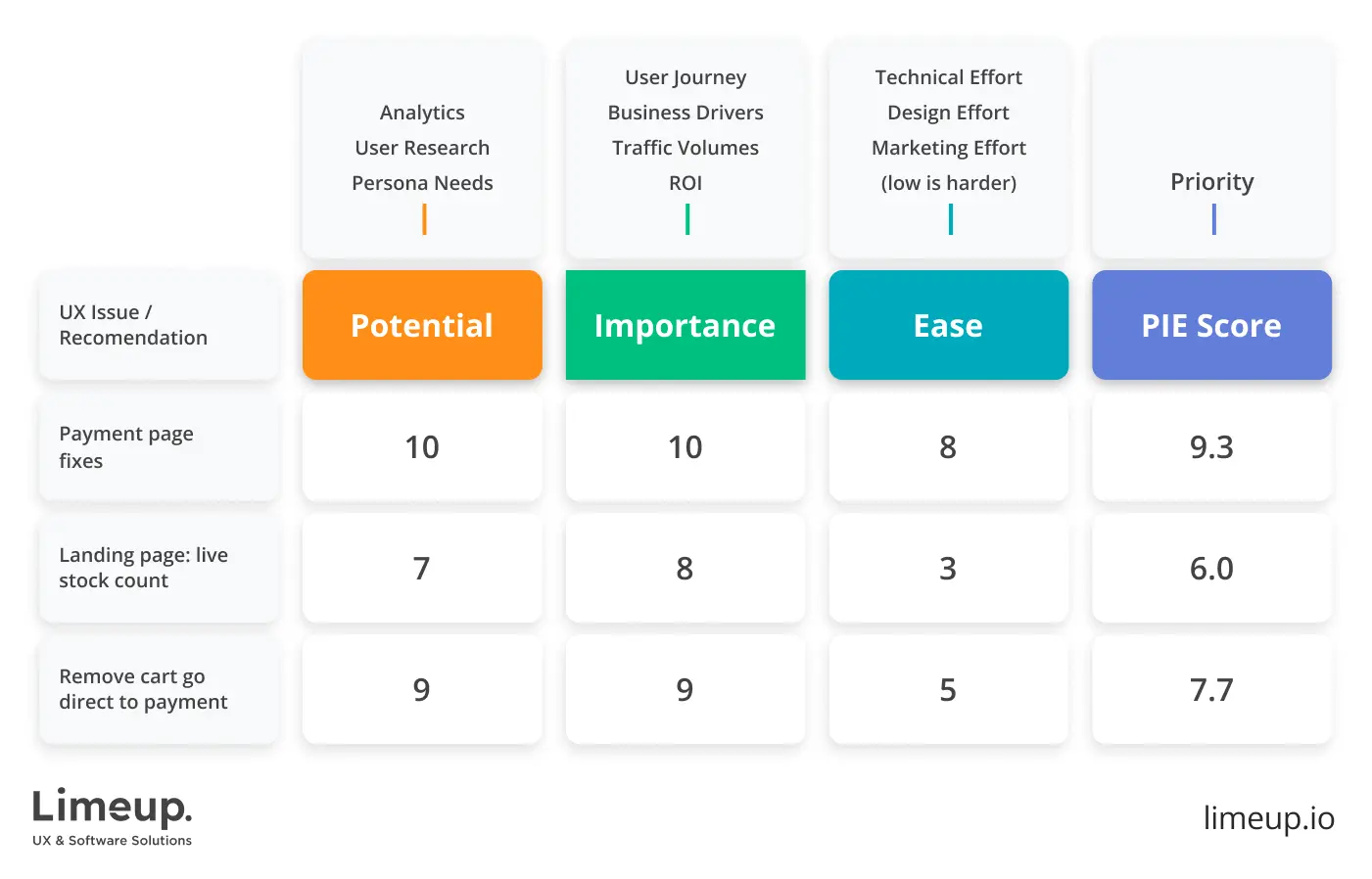
Example of defining focus areas.
How to conduct a UX review
In this paragraph, I’ll share the step-by-step UX review proceeding we follow at Limeup when working on our own website and helping our clients assess their products’ usability.
If you want to overview your product in-house with identifying usability problems, our easy-to-implement process will help you save time and resources. I tried to share all the essential details of the technique for your convenience. Here you will find the core usability principles that will help you to optimize the product, save your time and resources.
If you work with external UX experts on the review, this paragraph will help you better understand how the entire action is built in other companies, so you can optimize it for your business.
1. Product discovery
A solid UX review should start with product discovery. An expert should only start giving you UX and UI recommendations after assessing the current state of your product. Therefore, we recommend organizing a kick-off meeting where you’ll share your insights about your product performance, discuss your current user experience and user interface challenges and define the goals of the analysis.
I outlined several questions that will help you brainstorm effectively and get ready for the UX reviews:
- What user problem does your product solve?
- Who is your target audience?
- What are your core audience’s pain points, needs, and behaviors?
- What are the key features of the product that helps address users’ needs?
- Does this interface provide the best solution for clients?
- What is your product’s vision in the long term? How will it evolve and adapt to changing needs and trends?
- Who are your competitors that are doing well? What makes them successful?
- Are there constraints to consider during the check-up process (such as technical requirements, time, budget, human resources, etc.)?
- What would you like to focus on during the task prioritization process?
These questions will guide your kick-off meeting and help you set the goals for the user experience overview according to the collected data.
At the end of your kick-off meeting, you should clearly understand the goals of the evaluation, such as reviewing the user registration flow to reduce the drop rate, and the next steps, such as market research, competitor analysis, and product performance analysis.
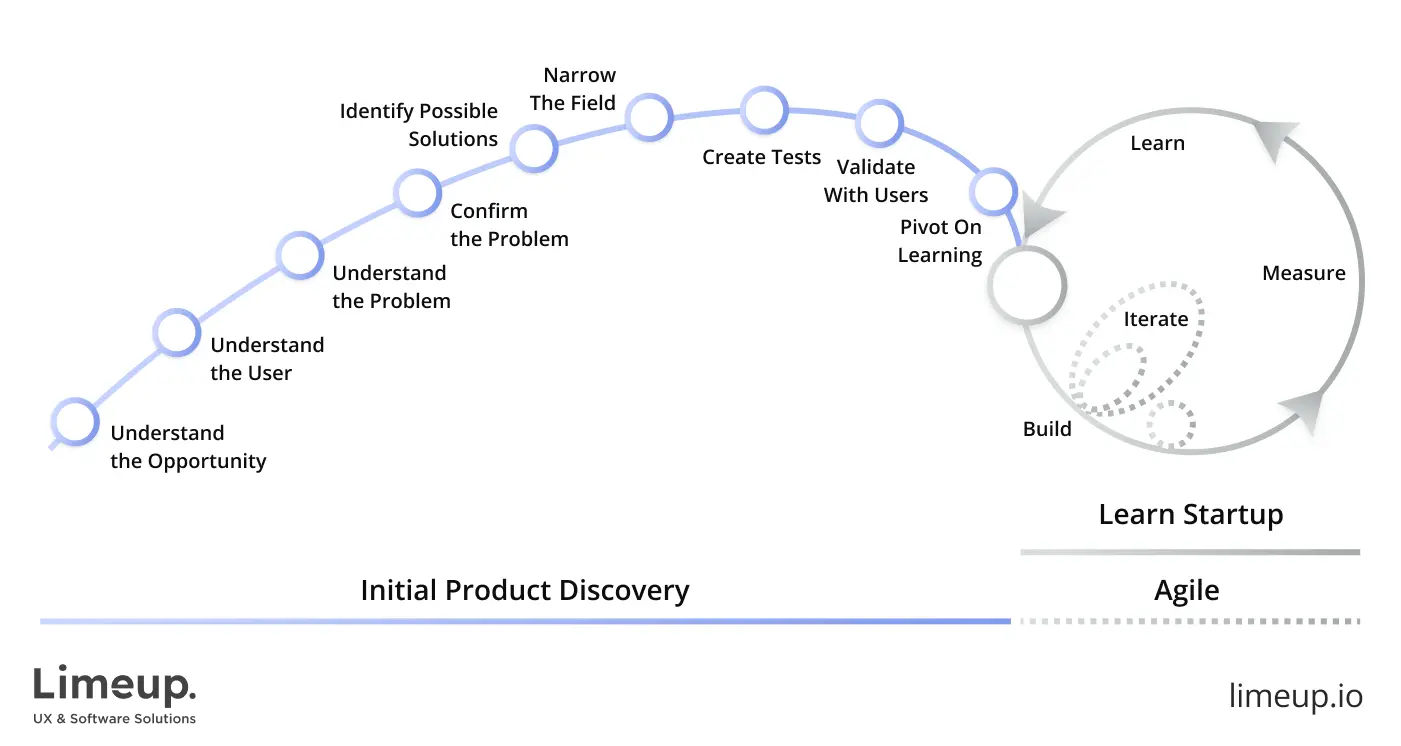
Product Discovery Workflow.
2. Product expert analysis
At this point, you should already know the UX issues and challenges you’d like to solve with your UX review and what you’d like to achieve at the end of the project.
The next step is to choose the research methods. It’s up to UX experts to decide. Their role is to ensure the selected technique will help them achieve the desired results. I’ve already mentioned that a UX review is a quick usability analysis that does not cover user interviews, usability tests, field studies, and several methods that include direct user interaction.
However, many other research methods exist, such as heuristic evaluation, persona creation, value proposition discovery, cognitive walkthrough, and analytics.
As a next step, we plan the check-up on how the process works, following heuristics evaluation, product data analysis, and persona creation. At Limeup, we always cover two aspects during the UX review: aesthetics (how the product looks) and user experience (how the product works). Therefore, our UX experts overview the following product elements:
- Informational architecture
- The structure of web pages (homepage, about, contact, etc.)
- Main user interface elements
- Navigational user flows
- Content readability
- Lucidity of the content
- General comprehension

Components of UX expert review.
Since we involve several interface design and research experts, we always prepare interview questions and use cases for them to do the evaluation.
UX designers focus on aesthetics, branding, and design consistency, while UX researchers analyze a product from the usability perspective, such as navigational structure, user flows, easiness to use, etc.
Each round of UX reviews with an expert helps discover and collect multiple UX flaws and opportunities for a client. The recommendations are solely based on our experience and might not always reflect users’ feedback. We start analyzing the data and preparing the UX research report as soon as all one-on-one sessions with experts are held.
3. UX review report preparation
At this step, a UX expert is assigned to inspect and analyze session recordings, collect research data, and put together an actionable report to present and discuss with the client. A report is usually a PPT presentation or a PDF file that contains the following data:
- UI UX design evaluation by UX experts.
- List of UX flaws pinpointed by UX designers and researchers.
- Key metric analysis.
- Selected user flow analysis.
- Actionable recommendations to improve the UI and UX of the chosen user flows.
- Industry best practices from experts.
If you wonder what the report looks like, here is an example of UX review insights for a website home page done by our UX experts. Its main goal is to provide critical feedback and actionable UI UX improvement recommendations.

An example of one of the UX review report pages.
4. Findings implementation
Once we finish working on the product audit, we organize a call with a client to share the findings, communicate opportunities, and answer questions. It is usually a one-hour call with a friendly conversation, after which a client has a clear agenda of what to do next with UX issues. We always prioritize the recommendations based on their business value for the short term and long term.
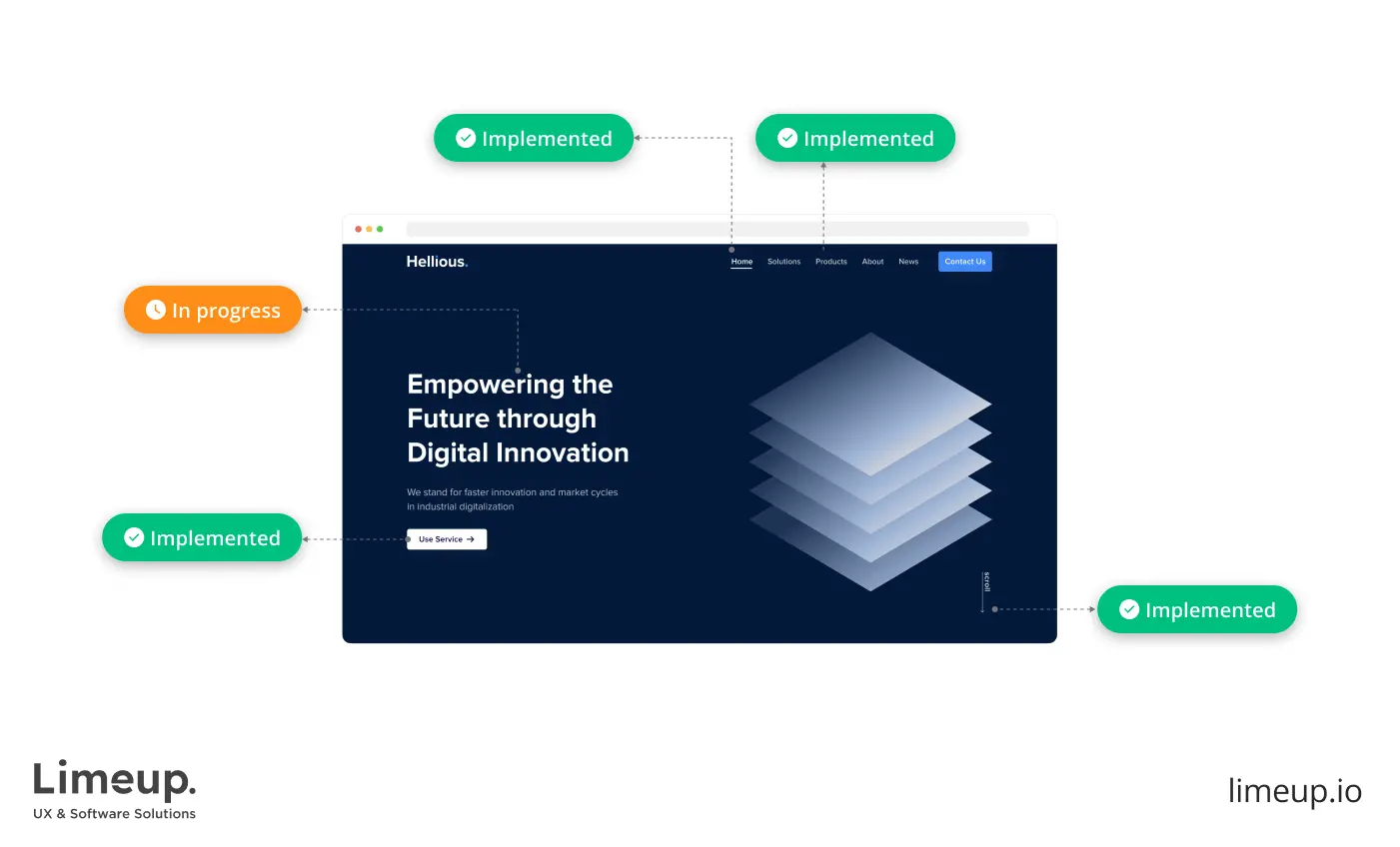
Example of implementation of findings.
Short-term recommendations include minor design major issues that are easy to fix and help make your product look more professional and appealing. We also define, for example, the critical areas to work on that should help to fix usability issues of the predefined user flows.
Long-term recommendations are focused on helping you craft a new UX strategy based on research insights, user needs, and your business goals. These are not quick wins. We always recommend working consistently on your product’s UX and UI, validating your hypothesis through research, and implementing user feedback.
Contact us if you need help with UX review or any other UX challenges. We’ve already helped companies like yours create impactful UX solutions that improve people’s lives. We’ll be happy to help you shape your UX strategy too.
Which UX review tools to use
Conducting user research is a time-consuming task, however, there are a few tools for you to automate this process.
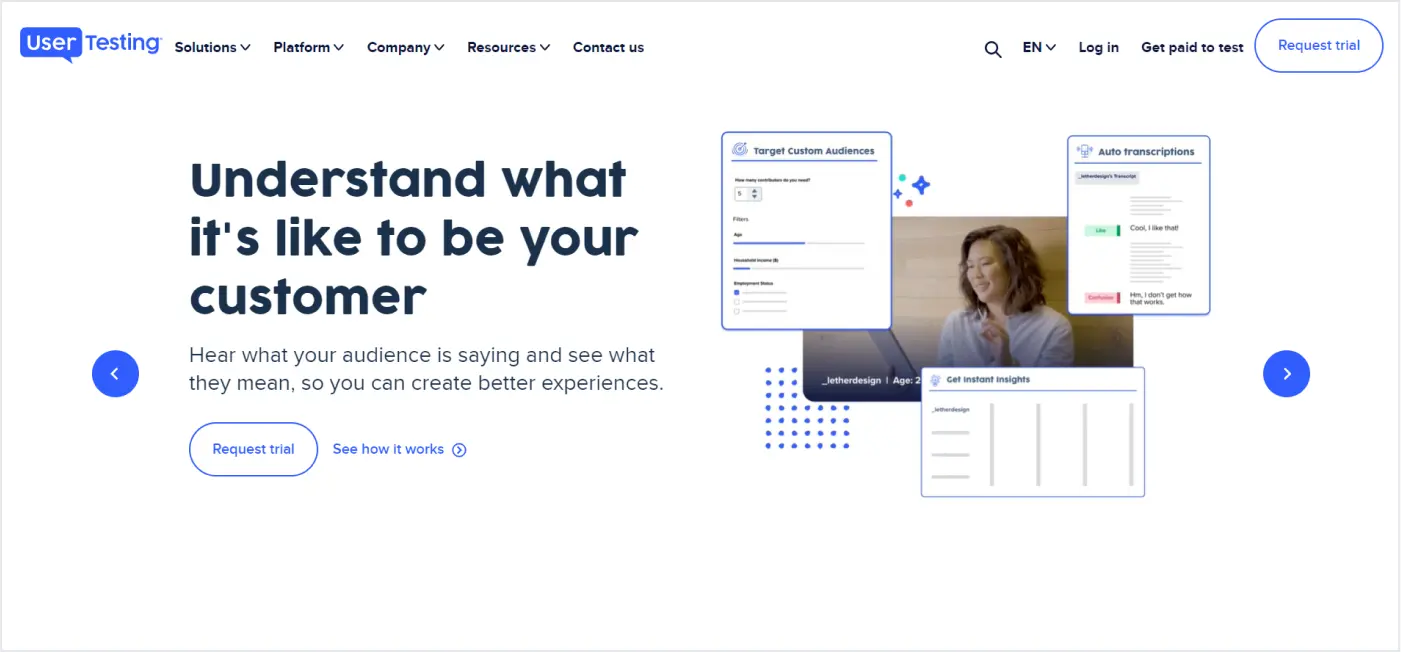
The service provides solutions for businesses that want to deliver customer-oriented products. Within this tool, you can overview how end-users interact with your web, mobile app or other solutions, what is superfluous and what functionality is missing. The wide range of services covers team solutions from digital products to UX teams.

Mixpanel provides you with tools for in-depth analytics to make future-proof decisions about your developing product. With the right metrics, you can define current users’ needs and create a product related to their requirements and expectations.
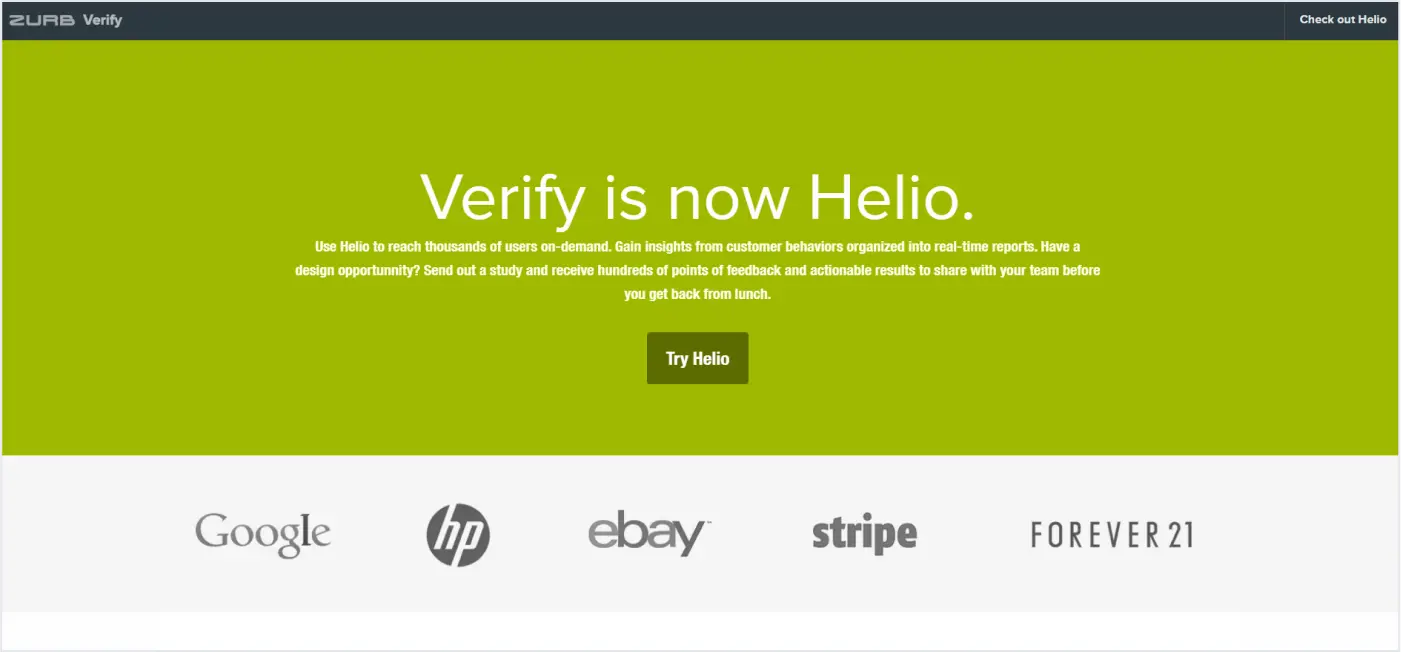
Verify is a tool for gaining insights about users’ behavior within detailed reports. The platform is known for rich features related to design. Businesses can test their new visual, analyze its compliance with the user’s request and optimize it before developing a product.
Our UX review example
At Limeup, we’ve partnered with a fintech company from the Netherlands to create a banking web application called VoloBank. The goal was to rethink conventional banking app design approaches to create a flexible and easy-to-use mobile application.
This 3-month design and development project involved different Limeup experts, including UX designers, engineers, developers, and researchers. However, I’d like to focus on the UX review we’ve done during the first stage of the UX design process.
As an example, in order to create an innovative banking web application, we had to analyze an existing solution and discover where it fails to meet users’ needs and company goals. So, our UX team of designers and researchers reviewed the most important user journeys to determine UX flaws that prevent users from registering and becoming paid customers.
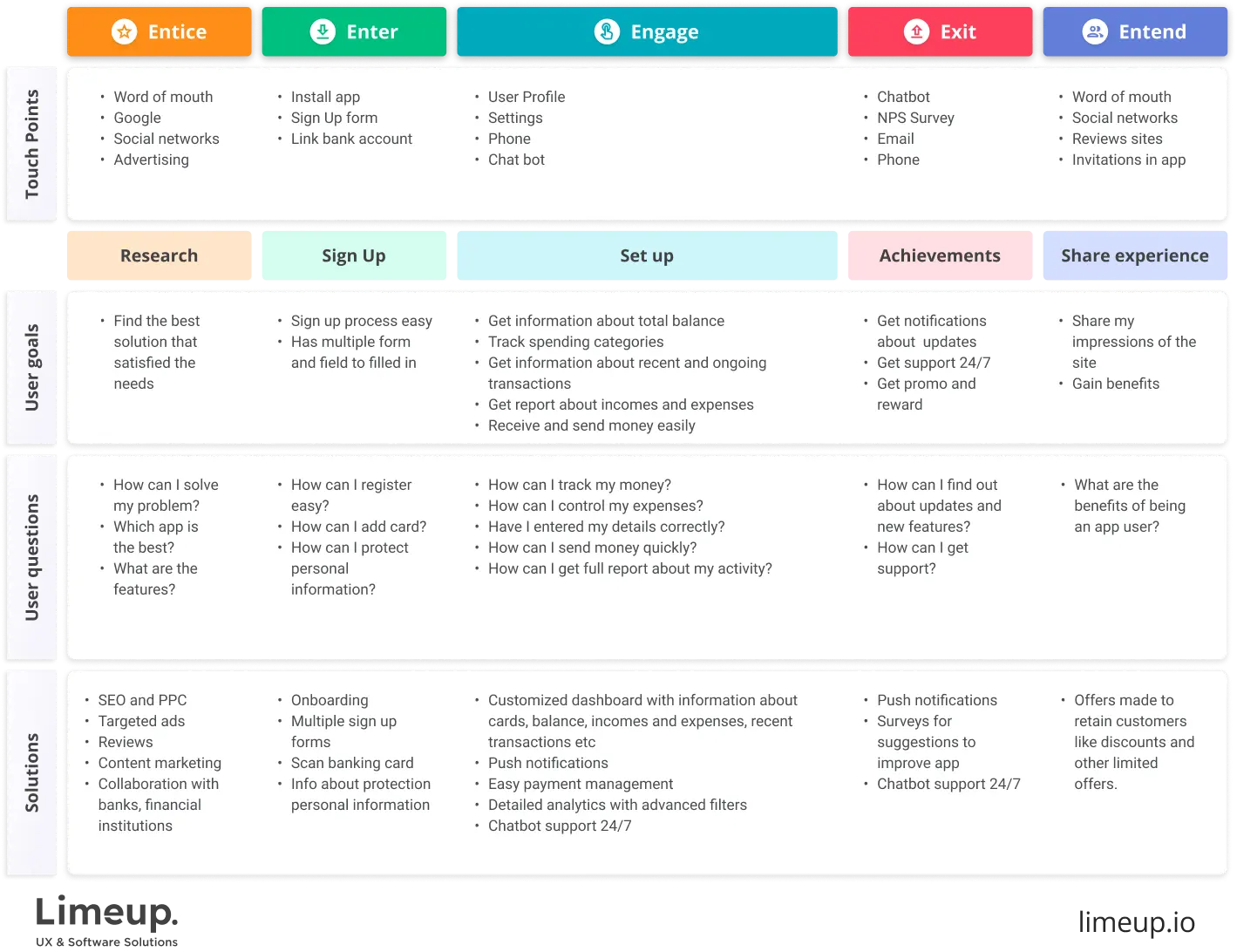
User journey map of VoloBank.
In this example, by analyzing existing user journey and behavior, and product performance characteristics, we managed to rethink the informational architecture of a banking app and compile a list of actionable short-term and long-term recommendations.
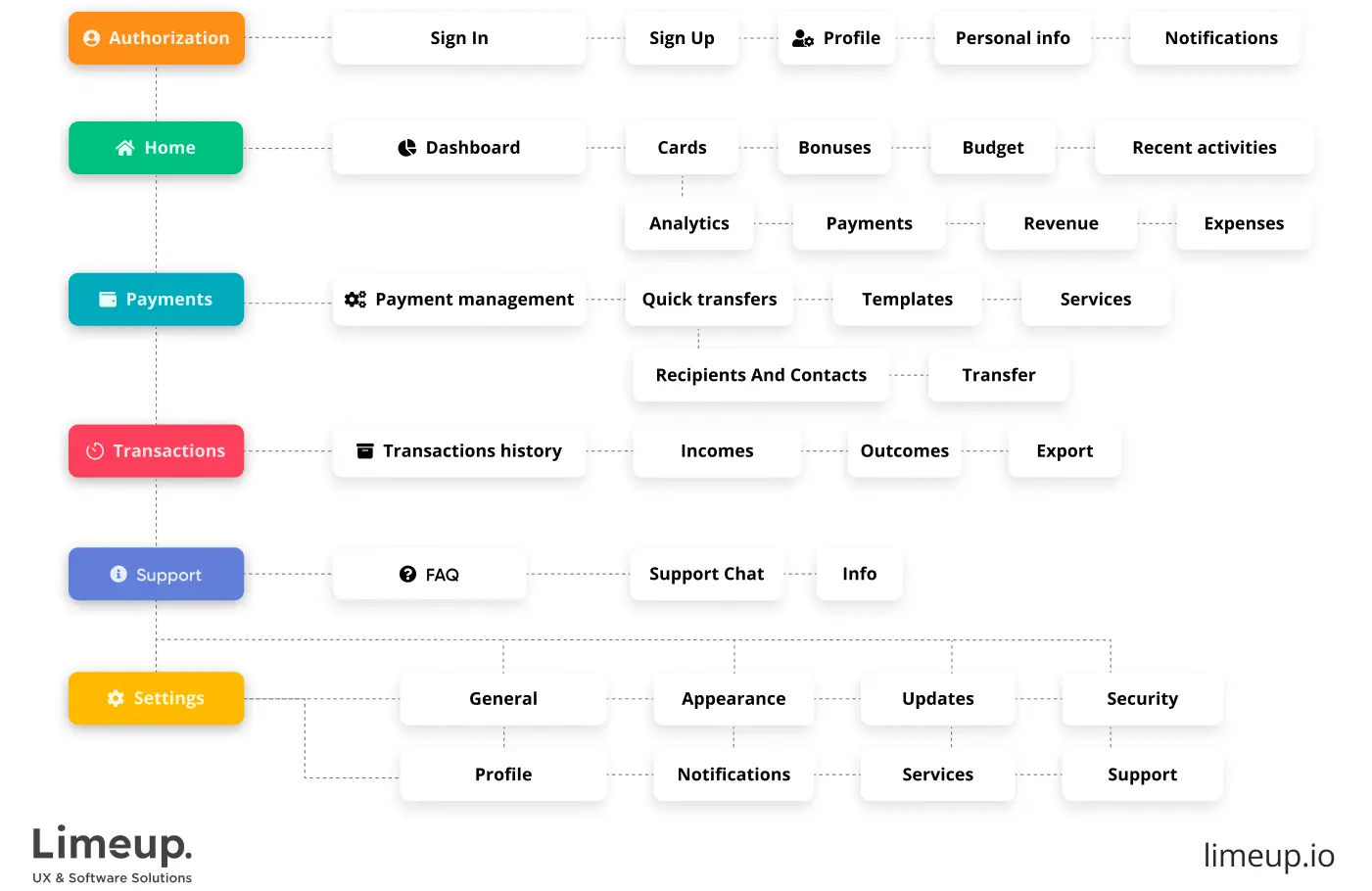
Information architecture we’ve built for VoloBank.
The project is under an NDA, so I can’t share our UX research report and short-term recommendations.
Admitting that most online banking apps are too complicated, our long-term recommendations focused on making the product accessible and user-friendly, which is possible to achieve through user experience design and development. Our usability testing findings helped create an accessible dashboard, facilitate the payment process, and adjust recurring payments.
Contact us if you need help with a UX review. At our UX design company, we have a full-fledged team of dedicated UX experts and a product manager to help you analyze the current state of your product to design an innovative solution.
5 tips for UI review
A holistic approach to product analysis includes both the UX and UI of a product. Therefore, we recommend reviewing the user interfaces design of a product while assessing its usability. When conducting a UI review, I recommend considering the following:
1. Review the consistency of product design
Design elements consistency is key in user interface design. A clutter-free, neat design following brand colors can help create the right first impression. Therefore, we recommend checking whether your product design is consistent on all web pages, from colors and shapes to the elements’ layouts and styles, for example, using a heuristic evaluation method.
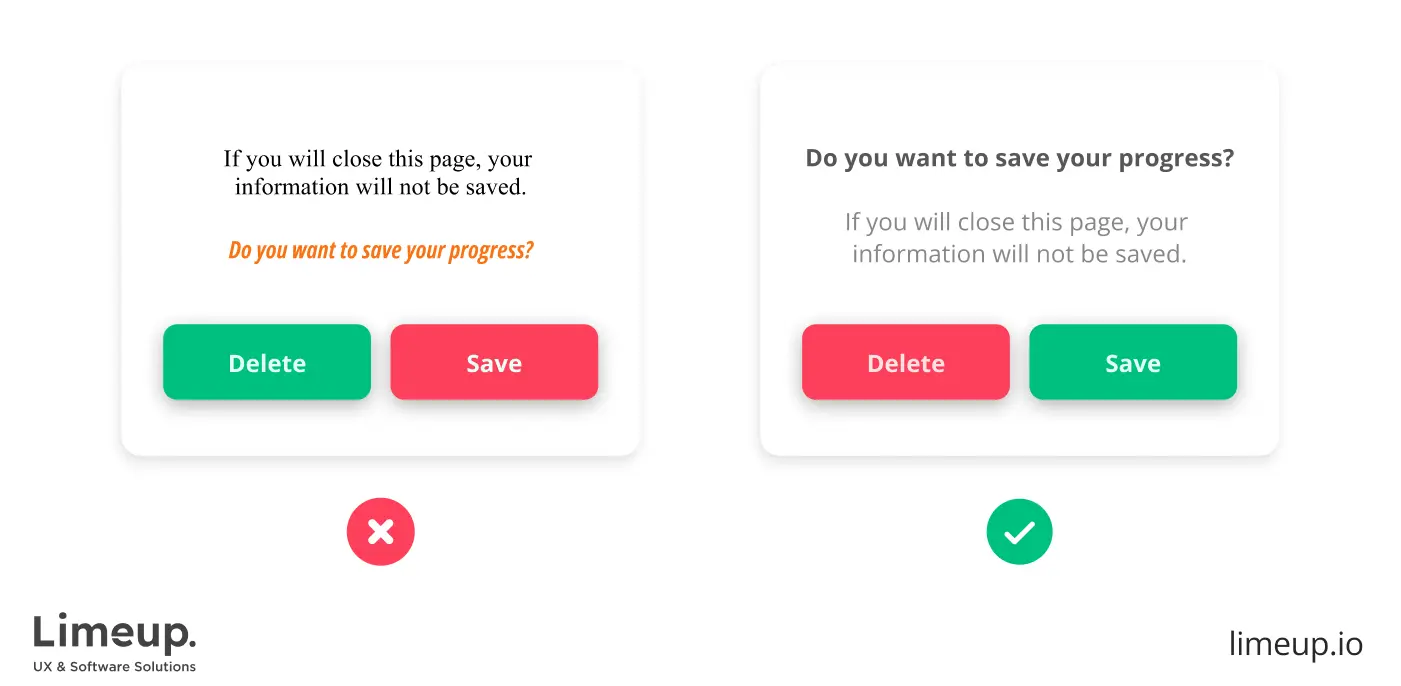
Example of design consistency.
Remember that inconsistencies can negatively affect user experience. That’s why an expert UI review can help you discover and fix UI flaws.
2. Mind visual hierarchy
Visual hierarchy terms of usability testing are all about how elements are arranged on a screen to show their order of importance. By placing design elements logically and strategically, designers can influence user perception and ensure they’ll first notice the most important data.
While reviewing your product’s user interface, look at the design and see if the most important elements are highlighted appropriately. How easy is it to skim a web page and find the data? Does the eye flow naturally from one element to the next?
3. Evaluate typography during UI review
Every UX expert will tell you that typography is critical in user interface design because it affects readability, hierarchy, and overall product aesthetics. Would users interact with poorly structured online content, which is also hard to perceive? Therefore, ensure font sizes, styles, and colors are consistent and enhance the overall user experience.
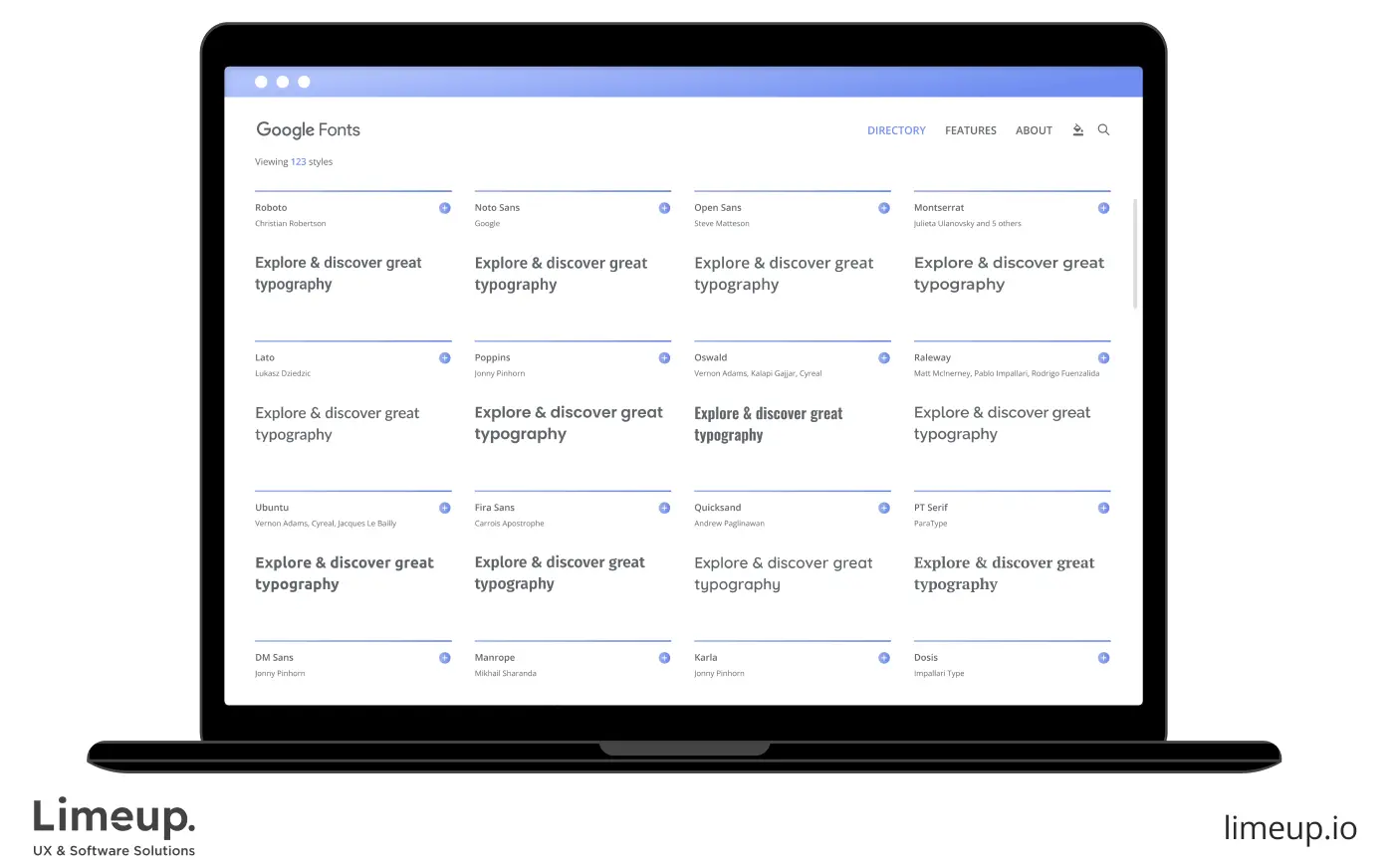
Example of different fonts in typography.
4. Pay attention to user interface details
Details matter when it comes to creating impactful digital experiences. At Limeup, we always go through endless discussions and rounds of tests to define usability issues before we figure out how to create the most pleasing user experience. We are convinced that details distinguish a good user experience design from a bad one.
When you conduct a UI review, check button styles, animation, elements hover states, icon design, and text legibility to ensure your product design follows brand guidelines.
5. Ensure multi-device experience
If your product is a mobile application, you must ensure that mobile usability is smooth on suitable devices. Whether running a website, multi-page, or landing pages, it should work and look properly on desktop, mobile, and tablet devices. Users can access your product using different devices, which should perform perfectly everywhere. Therefore, testing the product user interface on multiple devices is essential to ensure it works well across different screen sizes and resolutions.
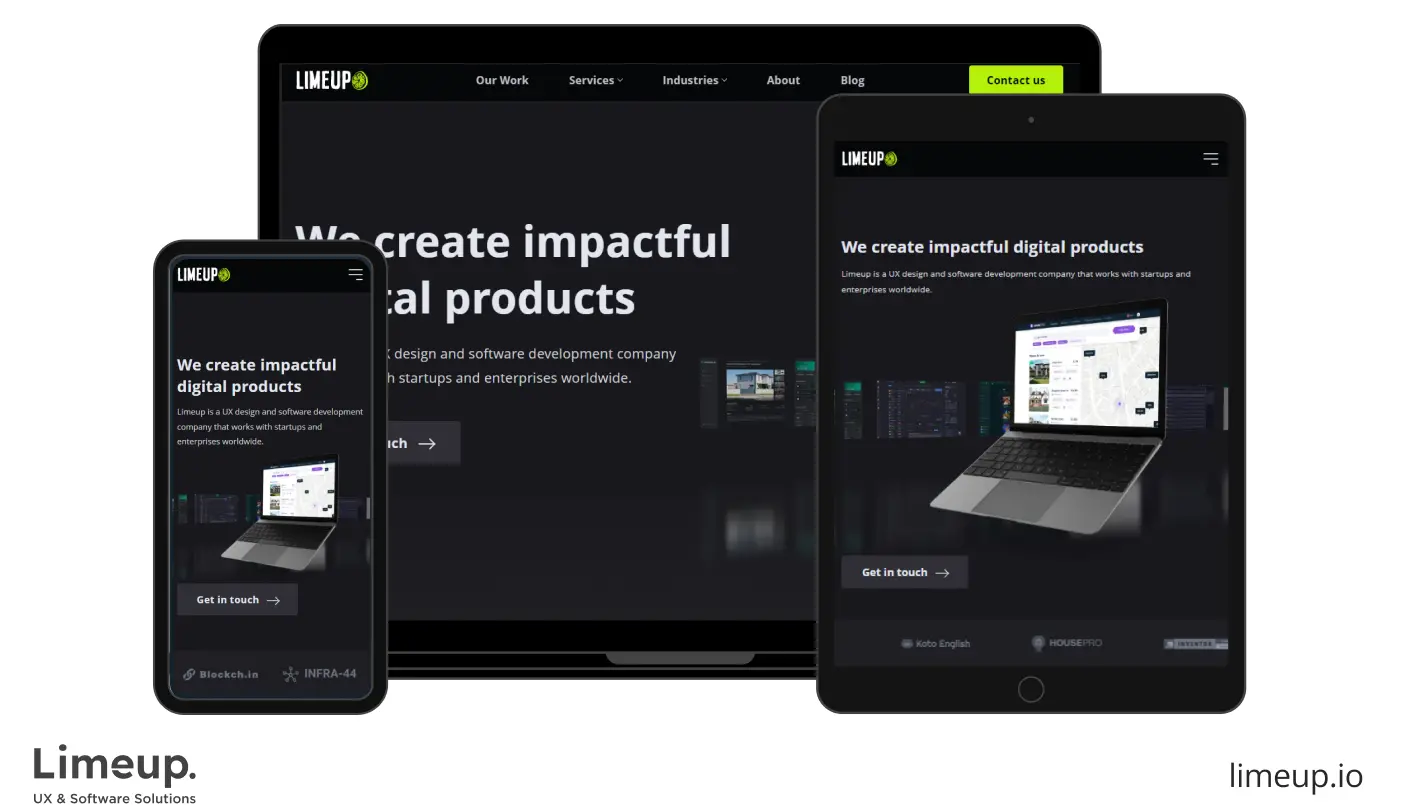
Example of multi-device design.
Every UX expert recommends paying attention to how the layout, font sizes, and images are displayed on different devices and adjusting them if needed. Following these tips ensures your product design is user-friendly, consistent, functional, and accessible.
6. Provide user testing stage
This type of testing stands for finding any usability problems that may lead to reduced involvement of users. In short, your testers will use the product as they are potential clients and analyze if this solution fits their needs and requirements, and if features such as the font size, pop-ups, and others perform well.
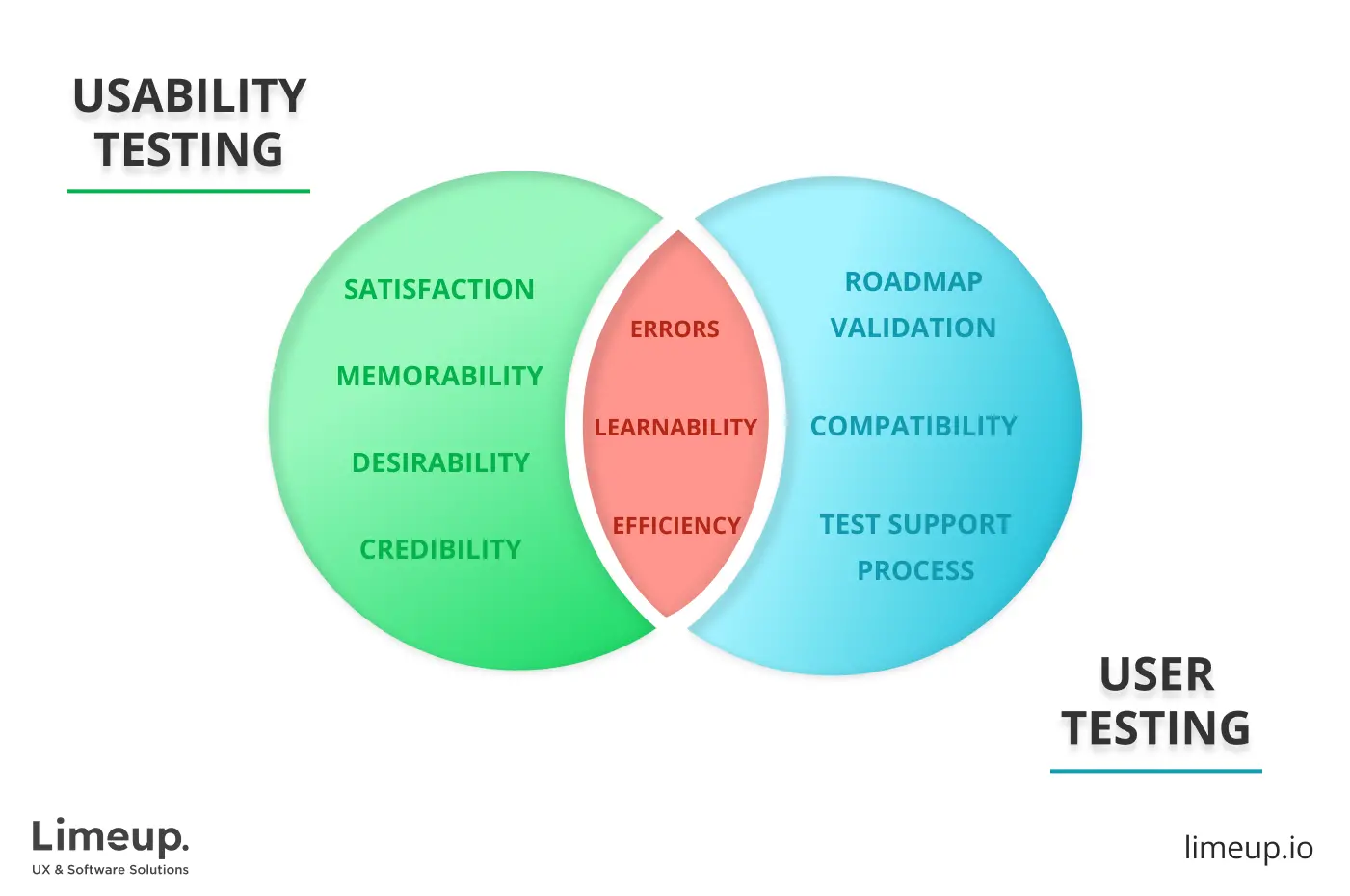
Example of user testing.
In addition, your product should solve the customer’s problem and be visually appealing from the target audience’s point of view. Let’s consider a few key benefits you can receive when optimizing user interface elements:
- Save resources. This method will allow you to find and resolve any issue in the first stage, thereby preventing money loss if users discover a problem after you launch the product. On the other hand, you will be able to evaluate the overall functionality, as well as the ability to add or remove some features.
- Increase conversion rate. The more users will interact with a website or an app, the higher conversion you will receive. You can also define which elements users like and which are better to replace.
- Identify challenges. Testing the user interface elements allows you to be aware of possible issues and needed improvements while upgrading the product. Since it’s better to provide user interface analysis at each stage of designing a solution, you can respond to any inaccuracies immediately.
- Improve users interaction. It’s not only general statistics that depend on this point, but, for example, the whole customer journey. There are essential points such as how long people stay on your website or an app, click on links, and engage with pop-ups, forms, and other elements.
- Follow the details. You can create a successful digital product if you pay attention to all the components, such as the color scheme you will implement, the design of objects and web forms, functionality, used data sources, etc.
The main point of this method is to test the proper people and receive full feedback about all the features, designs, and other elements of your future product. Therefore, you will solve usability issues way earlier and provide an outstanding user experience.
Need help with UI UX review?
Contact us, and let’s discuss how we can help you analyze the current state of your product and improve its usability.
Limeup is an established UX company that creates custom interface design and development solutions for startups and enterprises worldwide. We have a team of design experts, developers, researchers, and consultants dedicated to helping your business grow.
FAQ
How does UI UX review benefit my business?
A high-quality review allows you to define end-users’ needs and provide them with a problem-solver solution. Moreover, in-depth analytics save time and cost resources, preventing the possibility of developing a non-in-demand product.
What is the purpose to carry out a UX review?
There are several motivations to apply for such a review; first, designing and developing a new product or service that 100% meets clients’ expectations. The second case stands for redesigning an existing solution according to your industry, market trends, and users’ satisfaction.
How long does a UI UX review take?
On average, conducting a review takes up to one week, depending on the amount of data to evaluate within your project.








